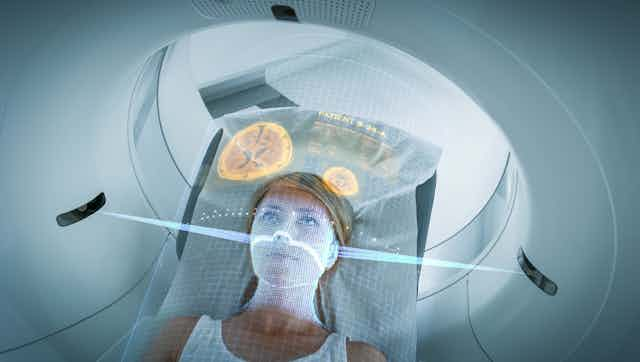Since the AI chatbot ChatGPT was released in 2020, we’ve been hearing about the threat posed by artificial intelligence. A statement signed by academic experts and tech industry figures even branded AI an “extinction risk”.
But whatever you think of such warnings, an existential threat to humanity is likely to be a threat only in the longer term. There are much more tangible risks in the near and medium term. So what are these and how worried should we be?
One longstanding and often-raised concern is the possibility that AI could take our jobs away. This is something I’ve been considering since 1997, when I wrote my first artificial intelligence paper on neural networks .
Our aim was to develop an intelligent manufacturing machine that is more capable than humans at detecting faults during machining operations. This would make the production system more efficient.
At that time, we wondered whether this would cause people to become unemployed when machines displaced humans on the shop floor. However, automation and other advances created new job opportunities for people, such as programming the machines. So, an answer to the quick pace of change in technology can be to retrain people for the new roles that technological disruption creates.
It’s not just manufacturing jobs that are at risk. AI image creation software has been the subject of claims that it could put artists and designers out of work. However, again I think history offers some lessons.
The invention of photography did not replace painting and I don’t believe image generators will either. It’s unlikely that AI systems will be able to produce novel artistic works in the short to medium term.
It’s possible, however, that in the medium term, machines could replace humans in many work positions. For example, in medicine, AI systems could integrate laboratory results, medical images and a patient’s medical history to provide a reliable diagnosis and prognosis.
They could also replace humans for many of the tasks carried out in surgery. Other fields that could eventually depend on AI include market data analysis, investment decisions and computer programming.
Despite the risks of unemployment, AI could have many positive effects in the workplace. For example, AI can act as a tool to enhance human capabilities, resulting in greater productivity.
In the short to medium term, the technology could have a similar impact to that of calculators in the 1970s, to the computers that replaced typewriters in the 1980s and the automation and robotics that transformed many factories in the 1990s.

Bad education?
In education, there have been concerns that ChatGPT could negatively affect the learning process of students, or their health. For example, a student could ask ChatGPT to write their coursework for them, bypassing the research and writing effort that leads to a better understanding of the topic in question. Perhaps a better approach would be to modify and enhance how we teach and assess the outcomes of learning.
Making education more focused on practical skills and the implementation of knowledge in problem solving could ensure a deeper understanding on the part of students. AI could be used for guidance, in much the same way we currently use calculators, to help enrich people’s knowledge.
In the near future, it’s vital that students pick university courses that understand how to use AI and choose subjects that will still be in high demand with the continued expansion of that technology.
However, we have assumed up until now that AI systems work as designed to provide accurate information. Unfortunately, we know that this isn’t the case.
In May 2023, for example, a US lawyer admitted using ChatGPT for case research. The lawyer’s filing was found to reference legal cases that didn’t exist. The chatbot had made them up. It’s not the first time that these “AI hallucinations” have been reported.
Then we have the very real risk that AI could be used for nefarious purposes such as identity theft. For example, criminals could use AI to clone someone’s voice. They could then phone family members and try to convince them to give out sensitive information that could be helpful for accessing bank accounts.
A variant of AI-driven identity theft is the use of deepfake videos. Among the many possible uses, there are fears they could be used to impersonate politicians, influencing elections. Recently, Martin Lewis, an English financial journalist and broadcaster was the subject of a scam advert using a deepfake video.
But what of the longer-term “existential risk” to humanity? Warnings about the possibility that AI could wipe out our species go back long before ChatGPT.
Whatever one thinks of this possibility, we should be mindful that AI will “live forever”. The technology is here to stay, which means that it will accumulate knowledge, data and experience gathered from billions of people over multiple generations.
If AI is designed to mimic human beings, its survival instinct and consciousness might develop gradually over decades. As such, it might stop being merely a tool to support us and become an entity in its own right. If that happens, there’s a real possibility it could then become capable of taking self-interested decisions.

